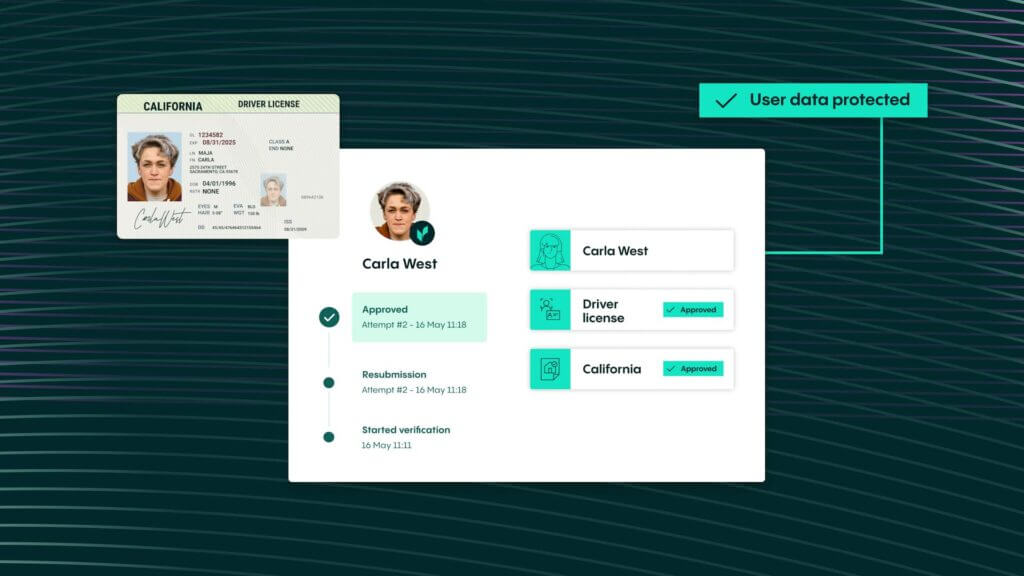Fraud Article
Detecting and preventing bonus abuse fraud in online gaming: strategies for 2025
Dive into the intricate realm of bonus abuse within the dynamic online gaming and gambling industries. Discover why iGaming businesses offer bonuses and how Veriff tackles fraud to protect organizations and customers.

The online gaming industry is growing—but so is the fraud that follows it. In 2025, bonus abuse fraud stands out as one of the most prevalent and damaging forms of manipulation in iGaming.
From multi-accounting to sophisticated chargeback scams, attackers exploit promotional systems intended to attract new users. If left unchecked, bonus abuse undermines platform profitability, violates gambling regulations, and erodes player trust.
This guide explores how bonus abuse works, the new tactics to watch, and how Veriff’s identity verification and fraud prevention technologies are helping gaming operators stay compliant and secure.
What is Bonus Abuse?
Bonus exploitation is the act of registering for a service multiple times in order to repeatedly obtain promotions or sign-up bonuses that are intended solely for new users. This practice is also referred to as multi-accounting and is particularly prevalent in the online gambling or iGaming industry.
Bonus exploitation is also known by various other terms, such as promotion misuse, bonus hunting, and bonus manipulation.
Although it primarily impacts websites offering poker, casino, and sports betting services, any business that relies on sign-up bonuses as a marketing tactic could be susceptible to this risk.
📌As Techopedia notes, bonus abuse is one of the most widespread online gaming scams—and it often overlaps with identity theft and money laundering.
Tactics used in Bonus Abuse
1. Multi-accounting with synthetic identities
Fraudsters create dozens of accounts using deepfakes or stolen IDs to repeatedly exploit sign-up bonuses.
2. Chargeback abuse & fraudulent withdrawals
Scammers deposit funds, claim bonuses, withdraw winnings—and then issue chargebacks, costing platforms even more.
3. VPNs, device spoofing & geolocation bypass
Using VPNs and emulators, attackers trick systems into thinking they’re in bonus-eligible regions like the UK or LATAM markets.
4. Reusable identity exploits
Repeat offenders slightly modify names, emails, or devices to bypass weak ID checks and get around bans.
Bonus Abuse fraud in 2025: Key trends
Bot networks
- Scalable automation allows fraud rings to claim hundreds of bonuses within minutes—undetected by legacy systems.
Deepfakes & synthetic IDs
- AI-generated identities can now fool basic KYC checks, giving fraudsters free rein to abuse promotions.
- Global geo-targeted exploits
- Players use IP-masking tools to target region-specific bonuses, especially in LATAM and US markets.
Fraud as a vehicle for money laundering
- Bonus abuse often serves as a gateway for criminal laundering operations, blending illegal funds into legitimate player activity.
Why Bonus Abuse is a compliance risk
Gaming regulators worldwide demand strong anti-fraud controls. Platforms failing to address bonus abuse face:
- Regulatory fines
- License suspensions
- Loss of user trust
Regulatory spotlight:
- US: Online gambling is regulated at the state level, with strict age and location verification rules. See our comprehensive guide to gambling laws and age verification in the US.
- UK: The Gambling Commission mandates fair bonus terms and strict AML practices.
- LATAM: Countries like Brazil are enacting new gaming regulations (e.g., Law 14.790/2023), requiring flexible fraud and ID verification strategies.
👉 Learn more:AML regulations in the global gambling industry
How Veriff stops Bonus Abuse at scale
Veriff provides end-to-end fraud prevention solutions to detect and block bonus abuse across all risk vectors:
Biometric authentication & liveness detection
Confirm that every new account belongs to a real person—not a bot, deepfake, or reused selfie.
Device fingerprinting & IP intelligence
Track repeat devices and detect anomalies in IP geolocation and behavior.
Age & address verification
Ensure players meet local gambling regulations with precise ID, DOB, and jurisdiction checks.
Fraud signal sharing & identity graphs
Prevent bonus abuse by linking multiple suspicious behaviors across accounts and sessions.
AML screening & risk scoring
Identify and flag potentially laundered funds disguised as gambling winnings or bonus abuse.
Bonus Abuse in action: Scenarios
🇺🇸 Scenario 1: Multi-accounting in the US
A player uses 10 synthetic accounts created with stolen data and different VPN locations to bypass detection, but Veriff’s liveness detection and IP tracking flag the unusual activity, blocking registration. According to Veriff’s Identity Fraud Report 2025, fraudsters often use emulators to mimic multiple devices, enabling them to create numerous accounts to exploit sign-up bonuses or free bets. This type of multi-accounting and bonus abuse is a common tactic across gaming, cryptocurrency, and currency exchange platforms.
🇧🇷 Scenario 2: LATAM VPN Abuse
A fraud ring in Brazil targets UK bonus offers. Veriff’s device fingerprinting and regional ID checks block access due to location mismatch.
🇬🇧 Scenario 3: Repeat offender with modified identity
A known fraudster re-registers with a new email and altered personal info. Veriff’s identity graphs link the patterns, marking the user as high-risk.
Conclusion: Make Bonus Abuse fraud a thing of the past
With bonus abuse tactics evolving rapidly, online gaming platforms must act fast. Traditional fraud tools aren’t enough—Veriff delivers the advanced technology needed to win the fight.
By combining identity verification, behavioral analytics, and fraud intelligence, Veriff empowers gaming platforms to offer exciting promotions—without getting burned.

Download the Report Today
Stay ahead of evolving fraud threats with insights from the Veriff Identity Fraud Report 2025. Learn key trends, risks, and strategies to protect your business and customers.














